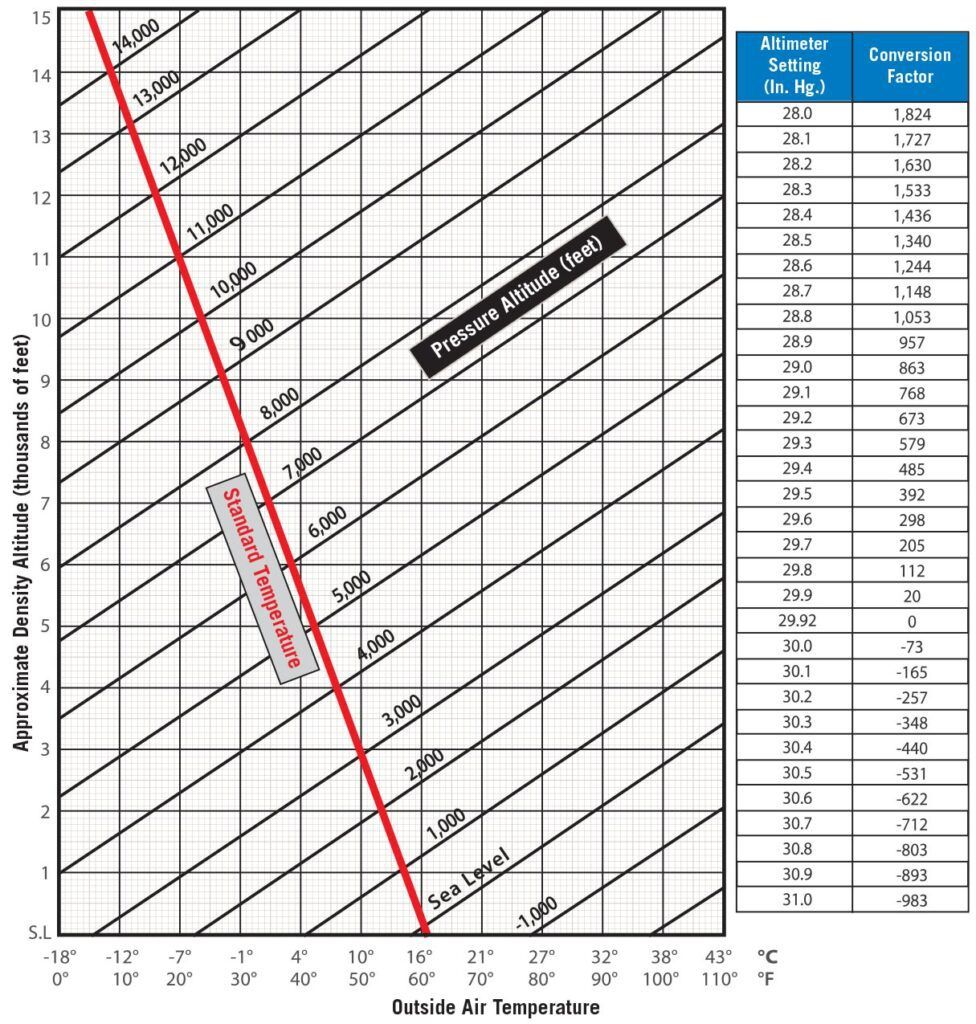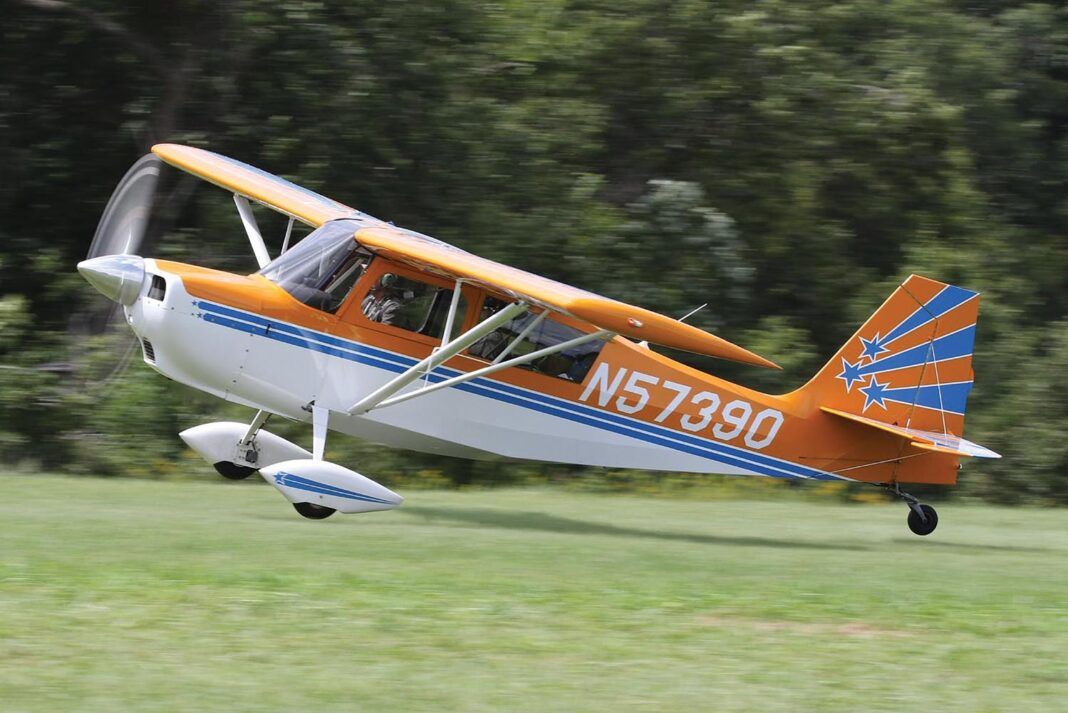What’s a low-performance takeoff—I don’t see that anywhere in my FAR/AIM document? Private pilots are taught to master short-field takeoffs and maximum performance climbs according to the airman certification standards (ACS). Some people call these “high-performance takeoffs.”
This is a delicate skill, demanding precise airspeed control, which is another way of saying “precise attitude control.” The ACS includes checklists, radio calls, verifying the assigned runway as well as the actual standards: rotation speed, initial climb speed and climb speed after clearing the imagined obstacle.
As I related in last month’s issue, I think the short-field takeoff is the most dangerous maneuver in the private pilot curriculum, but it’s not the most dangerous maneuver in actual flying. There, one of the most dangerous maneuvers is what I call the low performance takeoff. The unfortunate truth is that under some circumstances, “high performance” is pretty pathetic. How can we train, and retrain, to fly with low performance?
Training Versus Real Life
A lot of training topics are too dangerous to practice realistically. Departure stalls? Practice those to recover above 1500 feet agl, which isn’t like 15 feet agl at all. Circling IFR approaches? Practice those with high ceilings and 15 miles visibility, which isn’t like circling minimums at all.
Simulators allow pilots to practice some of the more challenging training topics, especially low-altitude engine failures in multi-engine airplanes. But none of the sim sessions I’ve experienced has truly duplicated the confusing sensations of a circling approach at 600 feet agl in minimum visibility.
High density altitude? We can’t really practice that at all, either in airplanes or simulators. Let’s look.
What Density Altitude Is
During private pilot training, we learn that density altitude is pressure altitude corrected for air temperature and, maybe, humidity. The FAA publication, FAA-P-8740-2, Density Altitude, goes into more depth. It includes the Koch Chart, which helps us estimate how much more runway is needed based on temperature and pressure.
This is a little silly: using it requires looking at the performance tables to find the distance required, and the tables always allow you to use the actual elevation and temperature, so why use yet another chart? (Note: POHs from older Cessna singles don’t seem to allow a temperature correction, because the tables are based on standard temperatures. Use the table with density altitude rather than pressure altitude.)
Precise airspeed control is the most important way to get maximum performance from an aircraft. Pilots train for that. Use the airspeeds in the POH. Pilots should fly like that. But that doesn’t cover everything a pilot needs to know when maximum performance isn’t enough.

To use the chart presented here, we start on the right side by finding the local altimeter setting in the left of the two columns. Determine the conversion factor and apply it to your field elevation. For example, if the altimeter setting is 29.5 inches, add 392 feet to the field elevation. At an airport at 1000 feet msl, the field elevation converted to pressure altitude is 1392 feet.
Now, move to the bottom of the chart and find the outside temperature. We’ll use 90 degrees F. Move vertically up until reaching 1392, and then all the way to the left. Under these conditions, as denoted by the blue lines, density altitude is approximately 3600 feet. That’s the density altitude for your takeoff.
— J.B.
Density Altitude Training
Tables, configurations and airspeed control. That’s not a lot of training, but it’s all that the ACS asks of private pilot candidates. There is no requirement to demonstrate a low-performance takeoff.
During simulator training when I started flying King Airs, the instructor put us at Colorado Springs (KCOS), where the elevation is above 6000 feet msl, for a high density altitude demonstration. At a high temperature, the density altitude was close to 10,000 feet msl. The runway was 11,000 feet long, and the King Air POH said that at maximum gross weight with no wind, the takeoff distance was around 6000 feet. I didn’t notice anything unusual about that takeoff, but it might have helped that I had been there before.
It’s usually the case under training conditions. Fly the right airspeeds with the right power setting and the ground falls away.
During my private pilot training, we were lucky enough to have the Big Bear City (Calif.) Airport (L35), elevation 6752 feet msl, a reasonable distance away. We went there on a hot day in a Piper Warrior. Despite the light load, the airplane barely climbed. But we had picked an obstacle-free departure path, and my instructor kept gently reminding me to fly at VY, the best rate of climb airspeed.
The only way to train like that is to fly like that. The late Jim Ralph, the FAA inspector who conducted my CFI initial checkride, really insisted on this. “If you teach low-performance takeoff by using reduced power,” he might have said, “you’re teaching pilots to use reduced power in high density altitude conditions.” He learned this the hard way, from investigating lots of accident sites.
Reduced-power takeoffs are the principal way we prepare students for high density altitude operations when a high-altitude airport isn’t convenient, but they are far from ideal. One reason is that we always add full power at some point to end the exercise, often resulting in trainees coming away with a firm idea of how much runway they require but without experiencing the slow climb to altitude or the obstacle-clearance challenges.
How Do We Train?
If we’re not lucky enough to be near a high-density altitude airport, how can we properly train for high-density altitudes? The answer is in the ACS: Read the performance charts, fly the proper airspeeds and know what to expect. I suspect that surprise can be a factor. A panicky pilot might find it tempting to raise the nose of an airplane that isn’t climbing, but that both hurts performance and increases the risk of a nasty stall. That’s why being ready is important.
A widely discussed accident at an Idaho backcountry airport (see NTSB WPR12LA283) illustrates some of the low performance possibilities. Don’t take off with a tailwind unless runway slope is a significant factor; sometimes, with a long runway and clear departure path, this can be trained. Lean the mixture for maximum engine performance. Some of this can only be talked about, instead of experienced.
How Else Do We Train?
The worst density altitude encounter I ever had was in the lush part of New Jersey, in my 1970 Mooney. There was a deer on the runway, so I went around, but the Mooney wouldn’t climb. This was at sea level, the temperature was near 85F/30C, and the humidity must have been around 95 percent.
The Koch Chart would say that the density altitude effect was small, especially compared to the effect of 30 degrees C at 5000 feet msl. But that doesn’t reflect the true density of the air, which was even lower because of the humidity. Koch may not have known this, but the Mooney did. The sidebar above explains some of this phenomenon. You don’t have to go to Colorado to experience the effects of high density altitude.
How Can We Climb?
It’s important to remember that low-performance takeoffs lead to low-performance climbs. I used to go to Hailey, Idaho’s Friedman Memorial Airport (KSUN), a lot. The field elevation is 5320 feet msl, and in the summer it gets hot there, so density altitude is often above 8000 feet. It’s high desert, so humidity is seldom a factor.
By the Koch Chart, rate of climb is reduced by about 60 percent. In a multiengine airplane with an engine failure, the rate of climb can be reduced by 100 percent, or more, meaning that the airplane won’t climb at all. Worse, because it is a one-way airport, it’s common to take off with a five- or even 10- knot tailwind, which hurts runway and climb performance even more.
There’s also a group of 50-foot-high obstacles about 1000 feet from the departure end of KSUN’s runway. Under these conditions, many airplanes will not clear them at maximum gross weight. The best solutions involve reducing the airplane’s weight as much as you can and take off at sunrise, when the air is coolest and densest.
Don’t Try This At Home
The low-performance takeoff is one of those “Don’t try this at home” maneuvers, so don’t try it at home. Except when you have to. Be aware that the performance will be low, perhaps surprisingly so. Gently fly at the precise airspeeds recommended by the manufacturer. Lean the engine for maximum performance.
At high angles of attack, like during takeoff, most lift comes from Newton’s Third Law, which states that every action has an equal and opposite reaction. So, lift comes from bouncing little balls with a mass of 28 units at the bottom of the wing. If the balls have only 18 units of mass, there will be about 35 percent less reaction to every action. So, humidity reduces performance. But by how much?
Using the same reasoning, atmospheric density is one of the factors in calculating lift. At 10,000 feet msl, the air’s density is about 75 percent of its sea level density. It’s like the chemist is throwing three balls against the wing, not four, so again there’s less reaction.
However, and according to the FAA’s Density Altitude publication, “Humidity is not generally considered a major factor in density altitude computations because the effect of humidity is related to engine power rather than aerodynamic efficiency. At high ambient temperatures, the atmosphere can retain a high water vapor content. For example, at 96° F, the water vapor content of the air can be eight (8) times as great as it is at 42° F. High density altitude and high humidity do not always go hand in hand. If high humidity does exist, however, it is wise to add 10 percent to your computed takeoff distance and anticipate a reduced climb rate.”
It’s important to remember that propeller-driven airplanes depend on a spinning airfoil to generate thrust. Not only is the less-dense air reducing lift, it also reduces thrust. There’s no real calculation we can reliably perform to estimate the effects of thin, warm, humid air. Adding 10 percent to our runway requirement, as the FAA suggests, seems like only part of the story.Circled in white is the rudder limit stop. Airworthiness Directive 2009-10-09 R2, September 2011, applied to many models of Cessna’s 150 and 152 concerning the rudder getting jammed at full deflection by the stop mechanism. One corrective action includes installing modification kits: P/N SK152-24A or P/N SK152-25A).




